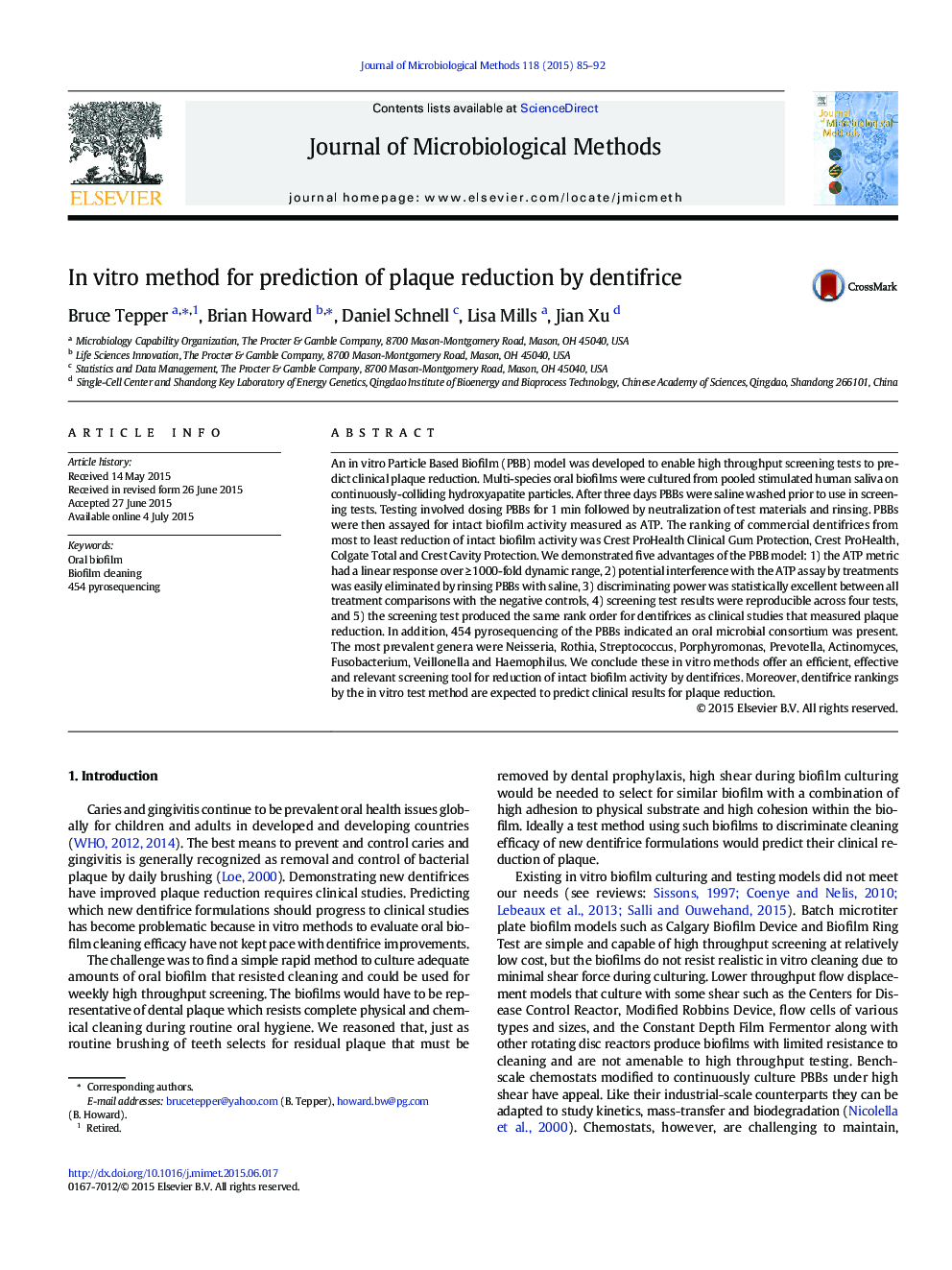| کد مقاله | کد نشریه | سال انتشار | مقاله انگلیسی | نسخه تمام متن |
|---|---|---|---|---|
| 2089760 | 1545925 | 2015 | 8 صفحه PDF | دانلود رایگان |
• New in vitro Particle Based Biofilm model predicts clinical plaque reduction.
• Robust oral microbial consortium formed in three days based on 454 pyrosequencing.
• Test method using ATP metric had excellent discriminating power among treatments.
An in vitro Particle Based Biofilm (PBB) model was developed to enable high throughput screening tests to predict clinical plaque reduction. Multi-species oral biofilms were cultured from pooled stimulated human saliva on continuously-colliding hydroxyapatite particles. After three days PBBs were saline washed prior to use in screening tests. Testing involved dosing PBBs for 1 min followed by neutralization of test materials and rinsing. PBBs were then assayed for intact biofilm activity measured as ATP. The ranking of commercial dentifrices from most to least reduction of intact biofilm activity was Crest ProHealth Clinical Gum Protection, Crest ProHealth, Colgate Total and Crest Cavity Protection. We demonstrated five advantages of the PBB model: 1) the ATP metric had a linear response over ≥ 1000-fold dynamic range, 2) potential interference with the ATP assay by treatments was easily eliminated by rinsing PBBs with saline, 3) discriminating power was statistically excellent between all treatment comparisons with the negative controls, 4) screening test results were reproducible across four tests, and 5) the screening test produced the same rank order for dentifrices as clinical studies that measured plaque reduction. In addition, 454 pyrosequencing of the PBBs indicated an oral microbial consortium was present. The most prevalent genera were Neisseria, Rothia, Streptococcus, Porphyromonas, Prevotella, Actinomyces, Fusobacterium, Veillonella and Haemophilus. We conclude these in vitro methods offer an efficient, effective and relevant screening tool for reduction of intact biofilm activity by dentifrices. Moreover, dentifrice rankings by the in vitro test method are expected to predict clinical results for plaque reduction.
Journal: Journal of Microbiological Methods - Volume 118, November 2015, Pages 85–92
